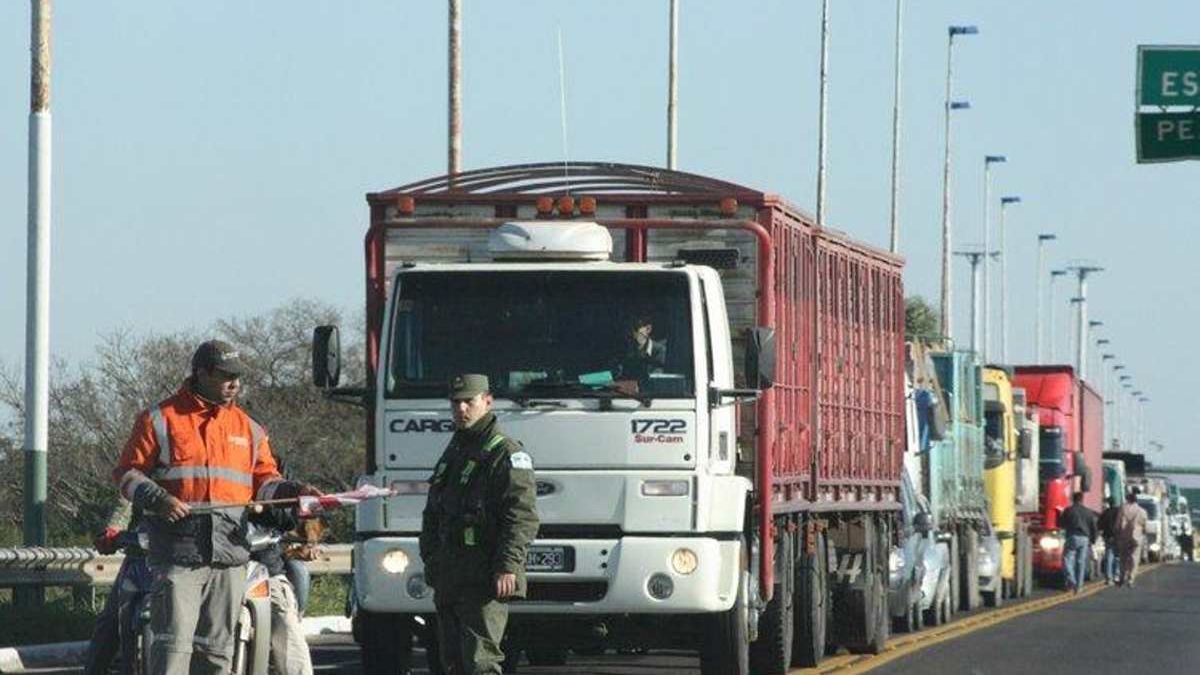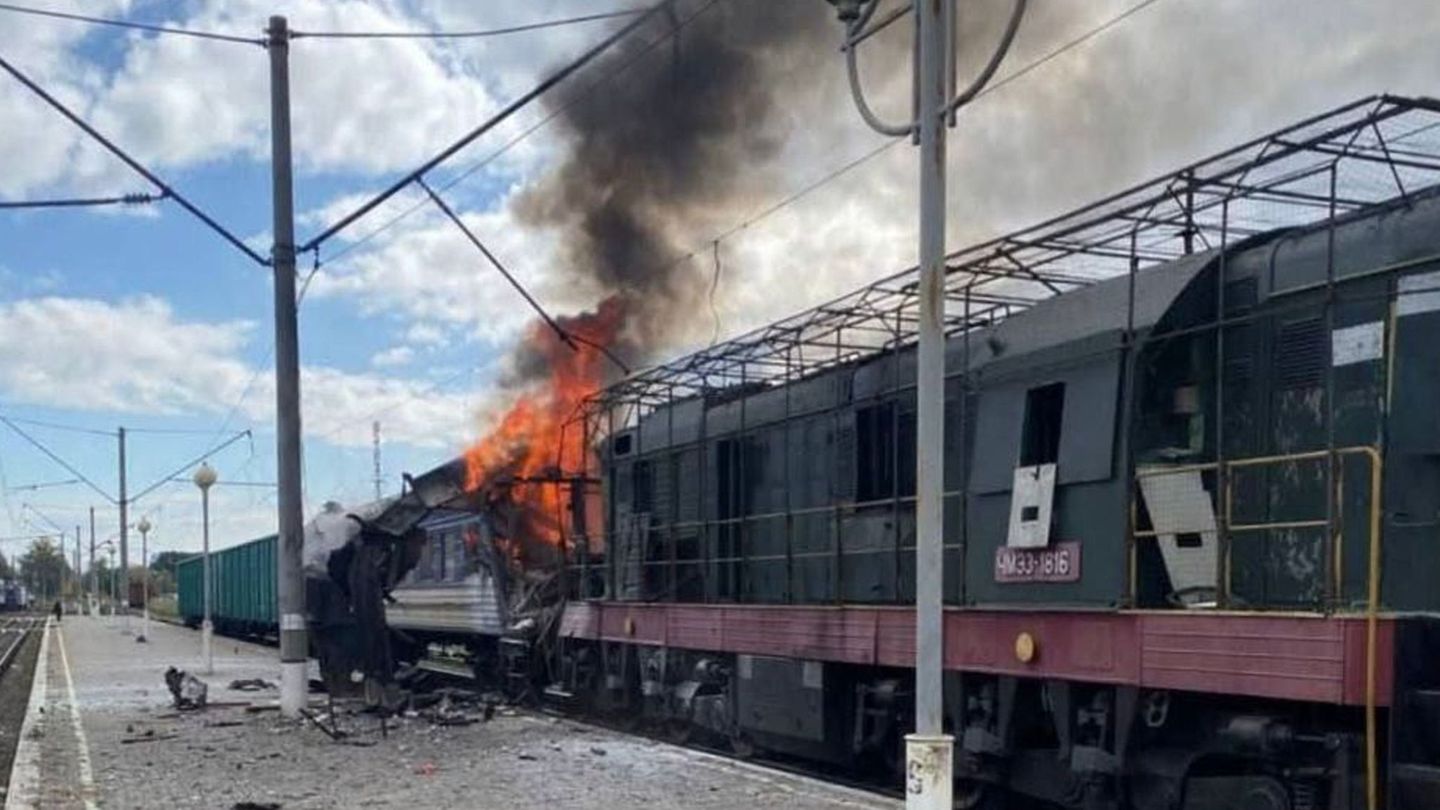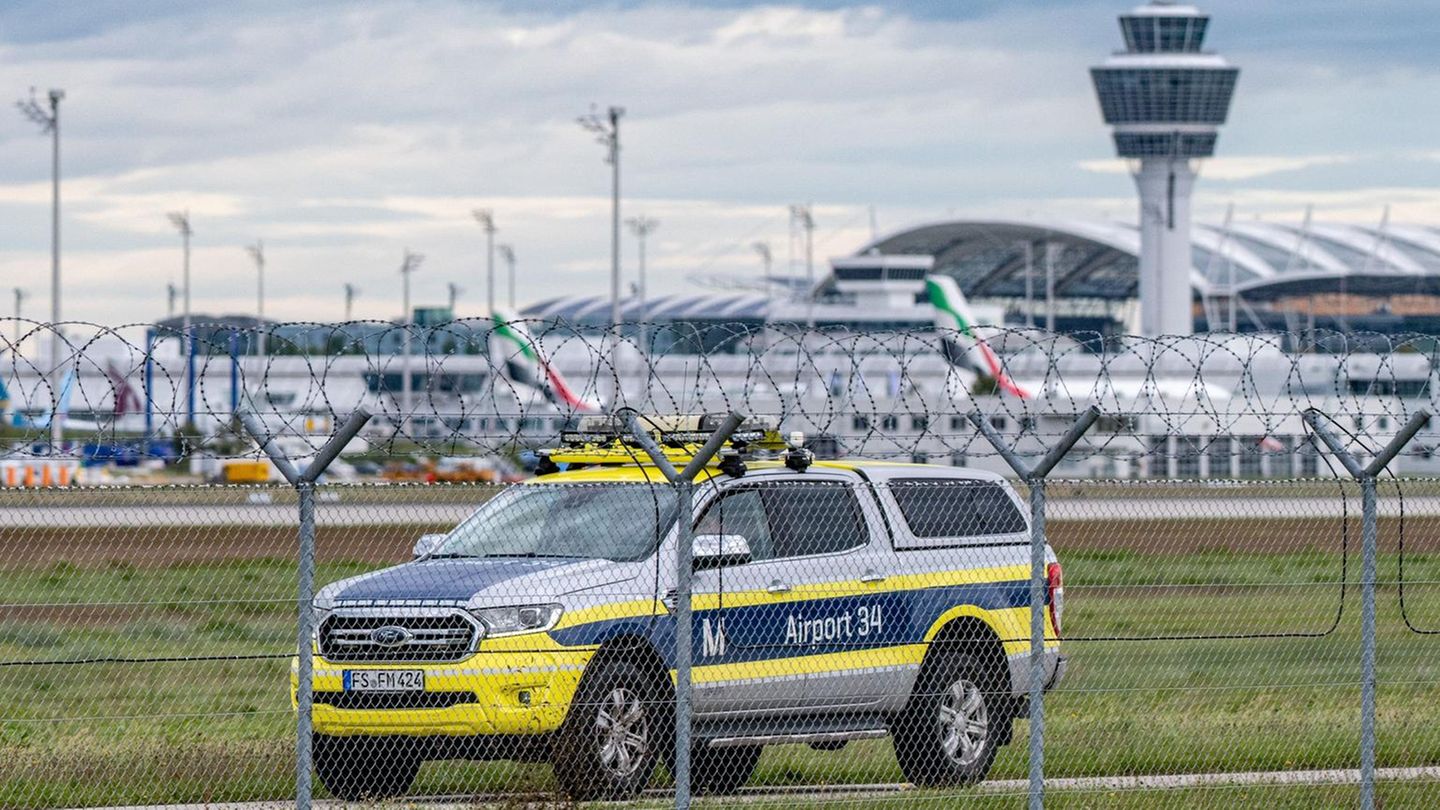In the month of February, the items that increased are: first with 14.04% FINANCIAL COST, followed by FUEL with 9.33% and PERSONAL with 7.21%. On the other hand, the items that did not present increases are LUBRICANTS, PATENTS AND FEES (remember that this cost is annual and last month it had an increase of 72%) and OTHER OPERATING EXPENSES.
paetac1.png
Source: PAETAC
In a context where distribution and logistics costs are beginning to rise due to the war between Russia and Ukraine in Argentina, costs are added that directly impact the freight transport of Goods and Services, such as the financial cost, fuel and tires. For its part, the price of a barrel of oil exceeding US$ 100 still leaves room for adjustment of the price of fuel in the domestic market, which depends on the correction of the wholesale exchange rate, the postponement once again imposed on liquid fuels and the correction of the local price.
The following graph shows us the 13 items that make up the costs faced by freight transport, taking as an example 3 destinations of 30km, 90km, and 300km.
The greatest differences occur in the case of the TOLL category, which increased by 3.16% for 30km, 5.21% for 90km and 8.61% for 300km. We also see a difference in the heading INDIRECT TAXES ON SALES, where 30km had an increase of 5.61%, 90km of 6.13% and 300km of 7%.
paetac2.png
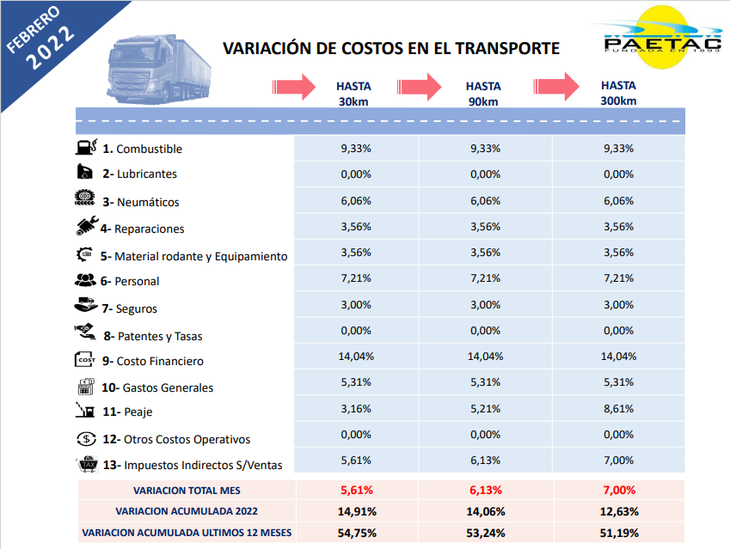
Source: PAETAC
Below we can see that in February 2022 of 13 items they increased 10. And if we compare them with the previous year (February 2021) the item that had not increased was the TOLL, which in this period had an increase for 30km of 3.16% , 90km of 3.16% and 300km of 7.00%.
paetac3.png
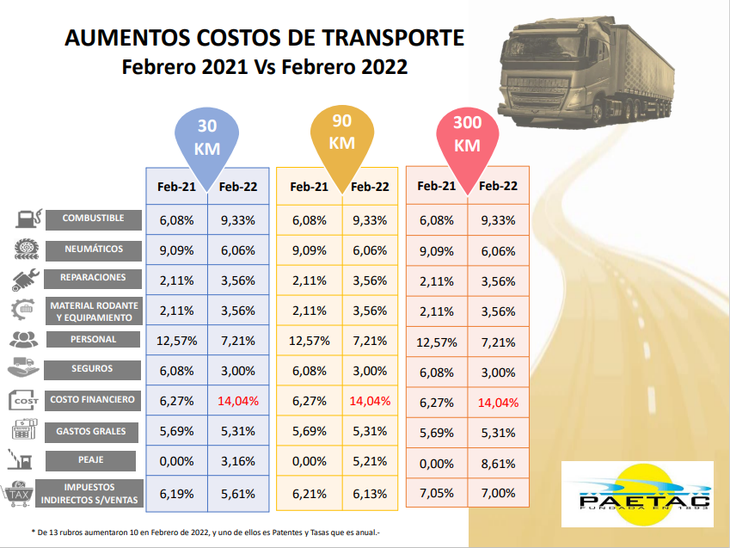
Source: PAETAC
In the month of February the toll increased again. To take an example, in the case of Western Access, the toll for Freight Transportation in Non-Peak Hours had an average increase of 76% year-on-year and in Peak Hours it had an average increase of 21%. Freight transport that moves at night is affected in this way its distribution cost structure.
The variation in Freight Transportation in the month of February has an impact on longer-distance routes where the average cost increases of up to 300 kilometers, for example, is 7% on average. This in some way harms transportation from the North and South of the country to the center or vice versa, which are routes with greater distance. Accumulated inflation for the first quarter is 12% and increases in the distribution of goods and services do not contribute to achieving a lesser impact on price variations.
Difficult months are coming in terms of inflation and the hidden costs in the structure of Freight Transportation in Argentina are never fully considered. However, its impact is evident in all the goods and services that are commercialized in our internal market.
Source: Ambito

